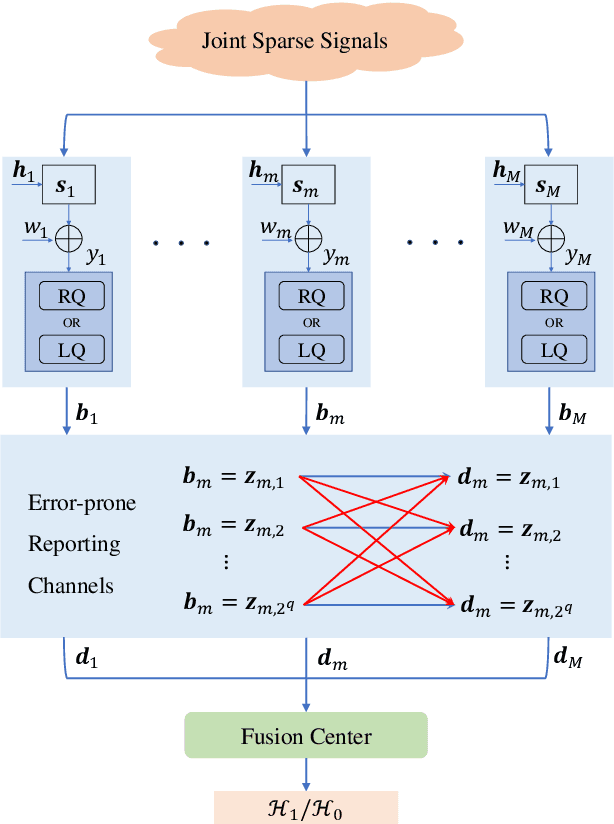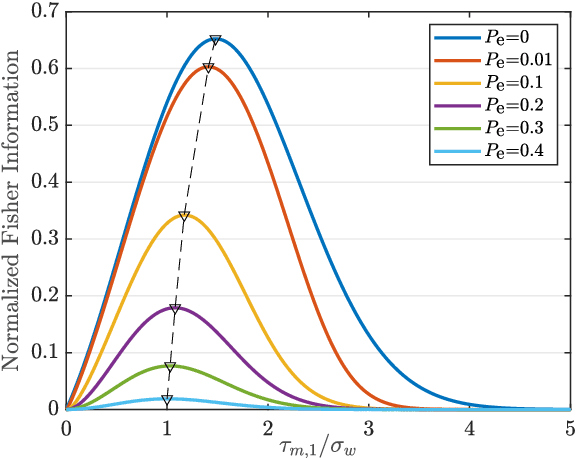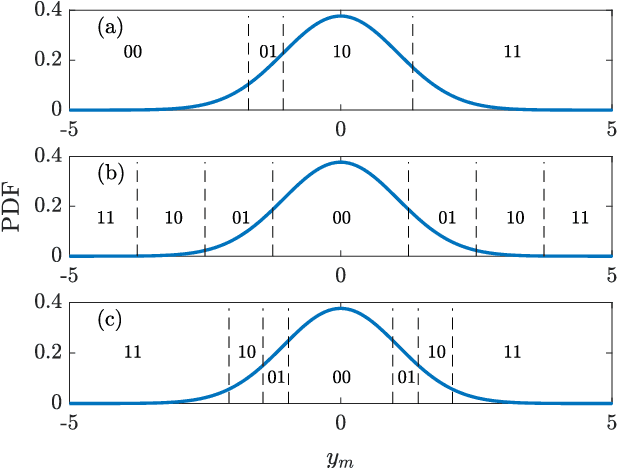Shefeng Yan
Ambiguity-Free Broadband DOA Estimation Relying on Parameterized Time-Frequency Transform
Mar 05, 2025Abstract:An ambiguity-free direction-of-arrival (DOA) estimation scheme is proposed for sparse uniform linear arrays under low signal-to-noise ratios (SNRs) and non-stationary broadband signals. First, for achieving better DOA estimation performance at low SNRs while using non-stationary signals compared to the conventional frequency-difference (FD) paradigms, we propose parameterized time-frequency transform-based FD processing. Then, the unambiguous compressive FD beamforming is conceived to compensate the resolution loss induced by difference operation. Finally, we further derive a coarse-to-fine histogram statistics scheme to alleviate the perturbation in compressive FD beamforming with good DOA estimation accuracy. Simulation results demonstrate the superior performance of our proposed algorithm regarding robustness, resolution, and DOA estimation accuracy.
Multi-bit Distributed Detection of Sparse Stochastic Signals over Error-Prone Reporting Channels
Nov 06, 2024



Abstract:We consider a distributed detection problem within a wireless sensor network (WSN), where a substantial number of sensors cooperate to detect the existence of sparse stochastic signals. To achieve a trade-off between detection performance and system constraints, multi-bit quantizers are employed at local sensors. Then, two quantization strategies, namely raw quantization (RQ) and likelihood ratio quantization (LQ), are examined. The multi-bit quantized signals undergo encoding into binary codewords and are subsequently transmitted to the fusion center via error-prone reporting channels. Upon exploiting the locally most powerful test (LMPT) strategy, we devise two multi-bit LMPT detectors in which quantized raw observations and local likelihood ratios are fused respectively. Moreover, the asymptotic detection performance of the proposed quantized detectors is analyzed, and closed-form expressions for the detection and false alarm probabilities are derived. Furthermore, the multi-bit quantizer design criterion, considering both RQ and LQ, is then proposed to achieve near-optimal asymptotic performance for our proposed detectors. The normalized Fisher information and asymptotic relative efficiency are derived, serving as tools to analyze and compensate for the loss of information introduced by the quantization. Simulation results validate the effectiveness of the proposed detectors, especially in scenarios with low signal-to-noise ratios and poor channel conditions.
Performance Analysis and Approximate Message Passing Detection of Orthogonal Time Sequency Multiplexing Modulation
Jul 06, 2023Abstract:In orthogonal time sequency multiplexing (OTSM) modulation, the information symbols are conveyed in the delay-sequency domain upon exploiting the inverse Walsh Hadamard transform (IWHT). It has been shown that OTSM is capable of attaining a bit error ratio (BER) similar to that of orthogonal time-frequency space (OTFS) modulation at a lower complexity, since the saving of multiplication operations in the IWHT. Hence we provide its BER performance analysis and characterize its detection complexity. We commence by deriving its generalized input-output relationship and its unconditional pairwise error probability (UPEP). Then, its BER upper bound is derived in closed form under both ideal and imperfect channel estimation conditions, which is shown to be tight at moderate to high signal-to-noise ratios (SNRs). Moreover, a novel approximate message passing (AMP) aided OTSM detection framework is proposed. Specifically, to circumvent the high residual BER of the conventional AMP detector, we proposed a vector AMP-based expectation-maximization (VAMP-EM) detector for performing joint data detection and noise variance estimation. The variance auto-tuning algorithm based on the EM algorithm is designed for the VAMP-EM detector to further improve the convergence performance. The simulation results illustrate that the VAMP-EM detector is capable of striking an attractive BER vs. complexity trade-off than the state-of-the-art schemes as well as providing a better convergence. Finally, we propose AMP and VAMP-EM turbo receivers for low-density parity-check (LDPC)-coded OTSM systems. It is demonstrated that our proposed VAMP-EM turbo receiver is capable of providing both BER and convergence performance improvements over the conventional AMP solution.
 Add to Chrome
Add to Chrome Add to Firefox
Add to Firefox Add to Edge
Add to Edge